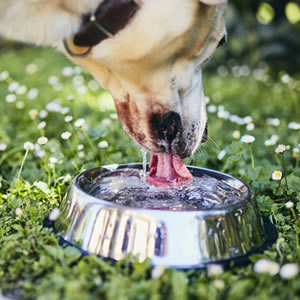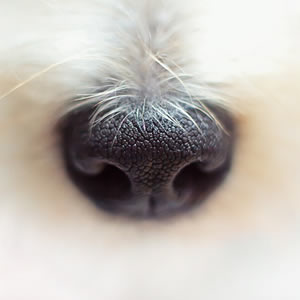
July 12th, 2022 by
If you are feeling hot and bothered by soaring temperatures, just imagine how your dog is feeling. Dogs regulate their temperature differently than humans. We may complain that we get sweaty, this is actually our bodies’ main defence against overheating. Dogs don’t do this. Instead, they release heat through their paws, their noses, and by panting. This, along with the fact they are covered in hair, means that they are not as effective at cooling down and this can lead to serious problems.
against overheating. Dogs don’t do this. Instead, they release heat through their paws, their noses, and by panting. This, along with the fact they are covered in hair, means that they are not as effective at cooling down and this can lead to serious problems.
Dogs are obviously more prone to heatstroke in the summer when temperatures are high so it’s important that you know the following:
- How to prevent heatstroke
- How to recognise that your pet is suffering from it
- How to treat it
1. Preventing heatstroke
Prevention is undoubtedly the best strategy as heatstroke can result in heat damage to tissues and organs. In some cases, it can even be fatal. All these things can help:
- Hydration
Make sure they have access to plenty of fresh water to drink. Always take some with you if you go out.
- Skip walks
We think of giving dogs lots of exercise as part of our responsibility as owners but it’s actually irresponsible to walk them when the temperature is very high. They can become dehydrated and too hot very quickly and even worse the hot pavement can cause burns to dog paws. Try instead going for walks when the weather is cooler such as in the evenings or very early mornings and always place your palm on the pavement to check the temperature – if it feels too hot for you then it’s too hot for your pup too! - Avoid direct sunlight
Keep them in the shade as much as possible, or make sure they have a shelter where they can rest away from the sun. Unfortunately, they often don’t know what is good for them so many will lie in the sun but this is dangerous. Ensure you get them to sit in the shade when outdoors or keep them indoors. - Use cooling ‘tricks’
Treats frozen into ice blocks, toys filled with water and frozen, paddling pools, cooling mats etc. These can all help, plus some of these things will keep them entertained too.
2. Recognising the signs of heatstroke
Despite your best efforts, your dog may still start to suffer. Keep an eye out for symptoms such as excessive panting, lethargy, salivation, glazed eyes, rapid pulse, vomiting, and diarrhoea as these can all indicate a problem. Keep monitoring them for any of these.
3. Dealing with heatstroke
It is important to know that time is of the essence when treating heatstroke as prolonged suffering can lead to greater damage. The first thing to do is take steps to start lower their temperature but make sure not to lower it too quickly as that can be just as detrimental. Start by encouraging them to drink and soak a towel in cool water then place it over their body. Don’t put them in a bath of cold water or give them ice if they display symptoms of heat stork as this will cause them to cool too quickly which can send them into shock. It is also recommended to contact your Veterinarian.
Comments
Leave a reply
Your e-mail address will not be published. All fields are required


